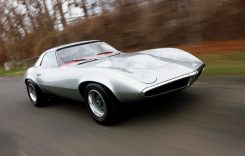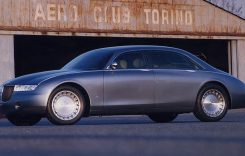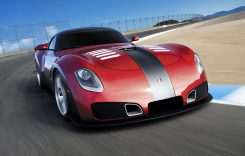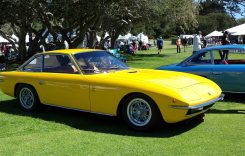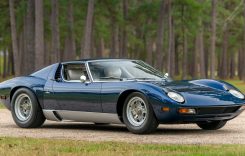We love the WR450F – always have – but we haven’t been this excited about the Yamaha open-class enduro since it was introduced. Even the aluminum chassis development in 2007 didn’t have us this worked up over Yamaha’s off-road bike. Yamaha maintains that many of its WR450F customers race their machines regularly. Check out the 2012 Yamaha WR450F First Ride for more details. To help serve those faithful racers the Tuning Fork crew has given the WR a new fueling system and entirely new chassis to make it even better than before.

The Yamaha DOHC, five-valve engine is pretty burly. It’s always been a torquey beast and the fuel-injected version runs better than ever. Our dyno made it tap out at 41.26 HP and 28.46 lb-ft. Both of these were the lowest of the shootout, but we’re talking about minute amounts here. The Honda was less than one full increment ahead in either category. These two defeats on the scorecard definitely held it back, but in the real world we find the WR to be right on par with the rest of the enduro class.
“Even corked up, it still is peppy,” says Martin, referencing Yamaha’s notorious emission controls. “Overall, it revs up fast and has a lot of bottom end. The biggest issue I have is that the bike takes forever to start! It would really suck to have to race that bike in a race where the start is dead engine!”
The WR gets all new styling which our testers loved with the exception of the headlight. The updated Yamaha offers plenty of torque and the bilateral beam chassis gives it a racy feel.
Dawes thinks there’s still potential locked away in the engine, but noted that “noise from the resonator on the head pipe was louder than the exhaust.” He wasn’t the only one to comment on the noise. It was the loudest in the stationary sound test with 93 dB, but our riders were more concerned with the ruckus coming from the engine/intake/header. We couldn’t pinpoint the noise, but it’s definitely the raspiest and most obnoxious.
Power output isn’t the issue for our testers, but controlling the engine does cause some concern. First of all, as Martin alluded to, getting the dang thing to start with its button takes an act of Congress. We put it to the test constantly during our photo shoots and not one of us could find a secret to getting it lit. Kicking works pretty well, but who wants to do that? Also, the drivetrain received poor marks, worst in the test, primarily because of its YZ450F-derived clutch. It takes Herculean strength to engage and it fades at the mere thought of fanning.
With the highest curb weight and poor clutch, none of our testers prefer the Yamaha in these types of conditions.
“The clutch is way too stiff,” announces Dawes, “but I’m not a Nancy-boy like JC so it wasn’t a huge deal-breaker for me. Shifts were solid and consistent.”
It was a deal-breaker for some. Our Off-Road Editor fell out of love with the Yamaha in the first technical section where the cable-actuated clutch requires continual on-the-fly adjustment and Popeye forearms. Otherwise the drivetrain is solid, as Dawes points out. The five-speed transmission has plenty of legs and doesn’t run out as quickly as the Honda. It can’t keep pace at top speed with the six-speed Euros, but the gear ratios and final drive are effective at all speeds. Only one of our riders was unhappy with the gearbox, specifically.
“The standard clutch just doesn’t cut the mustard,” agrees F. Garcia. “The transmission on the Yamaha is a bit funky, too. Some gears are tall and some are short – not a very consistent combination in my book.”
Decent engine, solid transmission and brakes… The real gem in this new WR is the aluminum chassis. Aside from the notoriously low Beta, the WR drags its belly across obstacles at 13.2 inches. Fortunately it comes with a decent full-coverage plastic skidplate. Despite sacrificing a little on the ground clearance, the Yamaha doesn’t actually slam into the ground very often. Its suspension does a marvelous job at resisting bottoming and has the best overall action out of the group. The Honda is stiff, Beta is spiky and the KTM is smooth, but undersprung. We’ve come to expect great things from the Yamaha YZ-F lineup and the WR inherits those traits along with the bilateral-beam chassis.
Yamaha’s sole shootout victory came in the handling and suspension category. Desert riding is full of “oh-shit” moments. When those drop-offs, hidden rocks and violent G-outs come out of nowhere, you’re best off on the Yamaha. The Kayaba speed-sensitive fork and shock are capable of handling essentially anything. The blue bikes have earned a reputation for stability over the years and this machine is no different. It’s virtually unshakable and gives our riders the utmost confidence to carry extra speed. Each of our riders tasted moto-Nirvana when the WR comes into its own on in a fifth-gear sand wash or balls-out two-track.
“The bike’s stability is perfect; it would take a lot to beat the handling of the Yamaha,” says our AA rider. “For me, the WR has the best suspension. It’s the stiffest of the group, but for how I ride, I think it is perfect and I never changed the settings at all. Overall, the bike handles well and there are no moments of ‘what will happen if I hit this.’”
Handling and suspension are the Yamaha’s strength. The
Kayaba components are the most well-rounded in the test.
Not all of our testers are willing to give the WR high marks, however, with Garcia complaining that the suspension was too slow and harsh for his liking. Regardless of Frankie’s minority opinion, everyone agreed that the Yamaha is a big boy. The WR might have gotten a rolling chassis from the YZ250F, but not a single one of our testers ever described it as particularly 250-ish. It feels fairly narrow and the seat height is listed at 37.8 inches, which is lower than the Honda and KTM, but our testers all felt it is the tallest and struggled to get their toes on the ground (sans our 6’4” beanstalk). It’s also the heaviest bike in this test at 274 pounds and it doesn’t make excuses for its girth.
A wide, hard seat is the only complaint for ergonomics, and some riders aren’t stoked on its mellow ProTaper handlebar – though it’s nowhere near as bad as the KTM. Otherwise it’s a neutral machine that allows the rider plenty of movement and a good base to stand from with wide, supportive footpegs – part of the reason it tied for second with its instrumentation and features. The computer isn’t as complex as the European bikes and it blows away Honda’s dorky hardware.
With 2.1 gallons of fuel available, the fuel injected mill was always one of the first to run out along with the Honda (1.9 gallons). Beta holds 2.1 gallons as well, but the carbureted 450 is likely the most efficient. They scored the same for fuel capacity, but the Yamaha will run out a bit earlier. The WR is the first to give a fuel warning light, but our longest leg was just over 75 miles and the Honda was the only one to coast in of fumes.
With everything that has been done to the WR450F to make it a better motorcycle, and it is better than older versions, make no mistake, the price is still lower than even the unchanged Honda. At $8090 the WR represents the best value in the class. That resonates with some of our testers, like Hutchison who picked it as his favorite, and helps overcome its few shortcomings.
